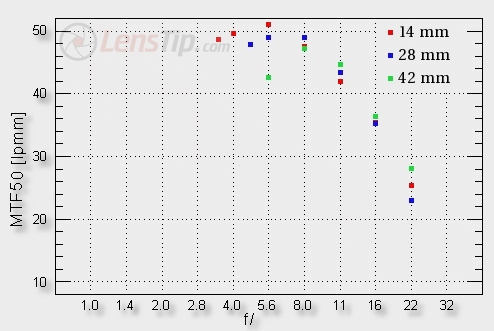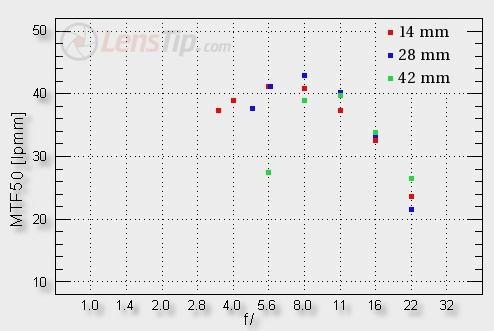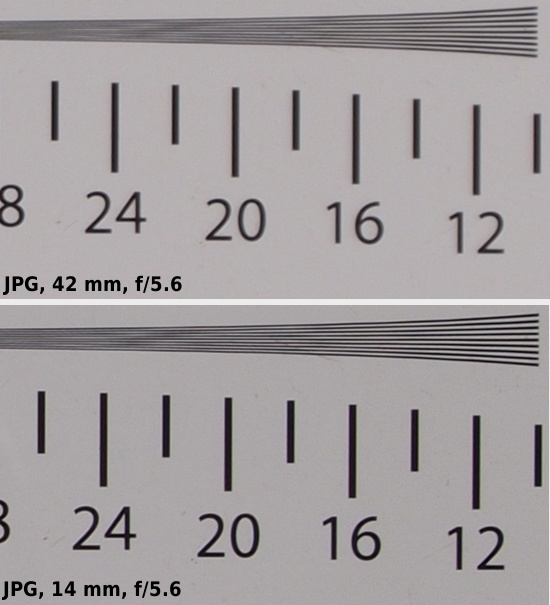Olympus M.Zuiko Digital 14-42 mm f/3.5-5.6 ED
4. Image resolution
Let’s start with the frame centre performance. Appropriate graphs are presented below.

Please Support UsIf you enjoy our reviews and articles, and you want us to continue our work please, support our website by donating through PayPal. The funds are going to be used for paying our editorial team, renting servers, and equipping our testing studio; only that way we will be able to continue providing you interesting content for free. |
- - - - - - - - - - - - - - - - - - - - - - - - - - - - - - - - - - - - - - - - - - - - - - - -
The performance in the 14-28 mm range is difficult to flaw. Even at the maximum relative aperture the image quality is so good that you can’t improve it significantly even by stopping down. Only at 42 mm the maximum aperture result start to lag behind - on stopping down by 1 EV we can see the situation improved distinctly. It doesn’t mean, though, that the 42 mm and f/5.6 combination gives you weak images, quite the opposite in fact – the images there are fully useful.
What’s more, the lens fares better here than the standard „kit” ZD 14-42 mm, which had lower MTFs.
Now let’s have a look at the graphs for the frame edge.

The results are distinctly worse than in the frame centre even though on a small sensor the frame edge is situated not far from the lens’s optical axis. However it doesn’t change the fact that the frame edge image quality is good. We can have some reservations for one combination only – that of 42 mm focal length and the maximum relative aperture - where the MTFs don’t reach even the level of 30 lpmm. You can hardly call images fully useful there but luckily on slight stopping down we see the problem disappear.
In this case the performance is a bit different than the performance of the ZD 14-42 mm as for this lens the 42 mm and f/5.6 combination was useful but you couldn’t say as much about the combination of 14 mm and f/3.5.
Taking into account the fact that we deal here with a „kit” lens (but the device doesn’t belong to the cheapest when you buy it separately) the overall assessment in this category can be only very good. Many “Sunday shutterbugs” who buy a Micro 4/3 camera with this kit lens won’t feel the need to change it for something better because the image quality will be satisfactory for sure. More ambitious photography enthusiasts will miss not a better image quality but better fastness.
 |






